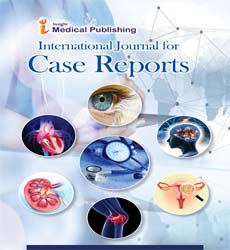Commentary on Human Embryology
Luca Fiorillo*
1Department of Biomedical and Dental Sciences, Messina University, Messina, Italy
- *Corresponding Author:
- Luca Fiorillo
- Department of Biomedical and Dental Sciences,
- Messina University, Messina, Italy
- E-mail: lacafiorello@live.it
Received Date: June 7, 2021; Accepted Date: June 21, 2021; Published Date: June 28, 2021
Citation: Fiorillo L (2021) Commentary on Human Embryology. Int J Case Rep Vol.5 No.4:e052
Abstract
Description
The normal histology and immunohistochemical characteristics of the normal thymus are frequently overlooked while evaluating thymic malignancies. Given that the majority of epithelial cancers affect adults, determining normal immunohistochemistry of the thymus is a rare occurrence. However, we believe that such knowledge is critical when evaluating pathological states such as epithelial cancers or tumours of different lineages. As a result, we've focused our efforts in this paper on presenting an overview of the thymus' embryology and morphology, as well as placing normal histology and immunohistochemistry into context for examining abnormal conditions. Gastrulation is a complex process that involves a well-coordinated set of collective cellular behaviours that contribute to the formation of the organism's body plan. Isolating specific tissues and allowing them to develop in isolation or in a novel environment is a practical way to investigate the mechanical and chemical interactions that drive this process. These methods are at the heart of experimental embryology, and they have allowed scientists to grasp the fundamentals of embryogenesis in a manner that observation alone could not. The use of Embryonic Stem Cells in 3D culturing methods has recently gained popularity. We suggest that these ESC-based methodologies are consistent with experimental embryology's goal, and we examine the insights that can be gleaned from this perspective, with a particular focus on gastrulation and the formation of the body plan. These stem cell-based, synthetic models provide a paradigm-shifting experimental system for quantitative measurements and perturbations of multicellular development, which is critical for advancing human embryology, reproductive and regenerative medicine without using intact human embryos. Although the standard didactic lecture is thought to be effective for delivering material and providing explanations, it frequently lacks time for more in-depth learning exercises. As a result, one of the most often criticised instructional approaches is the traditional lecture. They enthusiastically endorsed the virtual classroom's page format and design, and they agreed that the learning environment aided the learning process. The item of simple logging into the virtual classroom received abnormally variable responses; it had the lowest mean response; this variance in responses was related to technical factors, since the students used various devices. The overall manifestation of the In Vitro Fertilisation (IVF) procedure is embryo screening and selection. Its goal is to choose the "best" embryos from a larger group of fertilised oocytes, the majority of which will be found to be unviable due to faulty development or other factors. Indeed, it is widely accepted that implantation rates in humans are difficult to predict, even after embryo selection based on morphology, time-lapse microscopic imaging, or embryo biopsy with preimplantation genetic testing. In order to improve embryo evaluation and selection while also raising live birth rates, we'll need to employ new technology. There is no broad consensus on the exact embryological pathways that cause an omphalocele to develop. Many doctors and embryologists have attempted to explain congenital deformity as a result of normal embryonic development failing. The mechanisms behind normal and pathological ventral abdominal wall development are summarised in this article. The efficacy of interventions such as the use of different culture media, culture under reduced oxygen tension, blastocyst culture, co-culture with somatic cells, assisted hatching, preimplantation genetic screening, and intracytoplasmic morphologically selected sperm injection are all evaluated in this study.
Open Access Journals
- Aquaculture & Veterinary Science
- Chemistry & Chemical Sciences
- Clinical Sciences
- Engineering
- General Science
- Genetics & Molecular Biology
- Health Care & Nursing
- Immunology & Microbiology
- Materials Science
- Mathematics & Physics
- Medical Sciences
- Neurology & Psychiatry
- Oncology & Cancer Science
- Pharmaceutical Sciences
